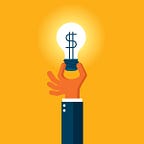The good, the bad, and the ugly
My take on how companies and the market rejigs after an epochal Covid19 induced shutdown.
Coronavirus has dramatically altered the playing field in which the world’s biggest companies operate, highlighting those that have one-upped others.
First, I would like to shift my attention to the S&P 500 rally since the March lows. The five largest companies collectively account for 20% of S&P 500 market cap, the highest concentration in more than 30 years (Bloomberg). This is one of the underlying forces behind the disconnect between the index and the economy. The following data amplifies the shock of this disconnect;
- Latest PMI figures were awful. With the US at 27, other nations like Spain and India stood at a single digit recording.
- Unemployment stands at an all-time high of 14.7% in the US and many jobs are being lost worldwide.
- GDP contractions worldwide are shocking: The UK is set to contract 14% in 2020, the EU by 13% and the US 4.8% in just Q1 2020.
- Lastly, I want to remark that US household debt increased to a record $14.3 trillion in the first quarter of 2020.
In turn, the factors that have propelled the market up to now come with certain ramifications;
- The high hopes and expectations for a vaccine rolling out as early as this year
Gilead Sciences has had Remdesivir approved for emergency trial on patients and there are many more organisations working towards a cure. What I am interested in is whether the location of the emerging successful drug will affect geopolitical relations between nations and lead to issues like prioritization or treating the medicine as a private product with completely inelastic demand rather than a public good for the common benefit of society.
- The massive stimulus and “whatever it takes” attitude by Central Banks
This has brought calm to investors about the economy reducing the impact’s severity. A particular aspect of bond capital markets that was brought to my attention was that the FED’s announcement that it was ready to buy corporate bonds and high yield ETFs spurred an array of bond offerings (including high yield) that were chiefly welcomed by investors. A clear example is Boeing’s huge $25bn offering, which was actually oversubscribed. What investors should be careful with is the amounts of debt such companies are getting into (Boeing has $39bn) and not to chase yield desperately without assessing the overall long-term picture of the issuer. Capital allocation of highly levered firms with a book value not enough to cover debt only survive at extremely low rates and are much more vulnerable to prolonged shutdowns or any other liquidity issues which can turn into solvency issues.
- Big Tech
Technology firms are playing offense and being extremely forward looking in an era where most firms are trying to figure out how much staff to furlough, where to cut their capital expenditure or whether to keep their dividend. For example, Shell announced a divided cut since WW2 and many retail stores are going into Chapter 11 bankruptcy. High fixed costs as a percentage of the cost structure, the slow move to online retail, a large number of employees, not being able to adapt to shopper tastes and process inflexibility are some of the reasons that have led to their demise.
The airline bailouts — Nationalising airlines at the brink of collapse like Lufthansa’s 11bn euro or Alitalia’s 3bn injection leaves unintelligent allocators of capital hanging around. For the airline industry, big unproductive players that will hardly breakeven and just dampen prices creating wasteful competition for those carriers that successfully kept costs at a minimum and used their spare cash effectively is not beneficial.
On the other hand, Facebook invested $5.7bn in India’s Reliance Jio, opening up a massive market to the potential monetization of WhatsApp amongst other business aspects. Netflix recorded 16 million subscribers in Q1 2020. The cloud, video-conferencing, virtual education — Big Tech is using this market momentum to its advantage, amplifying the dispersion between winners and losers and separating itself from the rest of S&P companies with soaring market capitalizations.
Lastly, the forward looking nature of the market and expectations built up to have economies reopened (potentially overly optimistic) has also propelled the S&P’s rally.
In essence, tech companies are winners, the market might be acting a bit strangely given the economic data and the massive wave of stimulus has left some doubts of whether firms benefiting from it should really do.
Thank you for reading this post!
